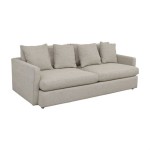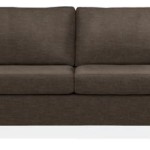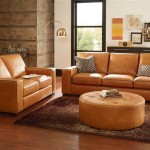Optimizing Space and Style: Selecting the Right Sofa for a Small Bedroom
The bedroom, traditionally a sanctuary for rest and relaxation, is increasingly morphing into a multi-functional space. In modern homes, particularly apartments and smaller houses, the bedroom might double as a home office, a reading nook, or even a secondary living area. Consequently, maximizing the available square footage becomes paramount. One significant piece of furniture that can contribute to both comfort and functionality is a sofa. However, choosing the correct sofa for a small bedroom requires careful consideration of size, style, and practicality. This article will delve into the key aspects of selecting a sofa that complements a small bedroom while optimizing its usability.
Key Point 1: Measuring and Assessing Space Limitations
The foundation of selecting any furniture for a compact room lies in accurate measurement and space assessment. Before even browsing for sofas, the room must be meticulously measured. This includes the length and width of the room, as well as the height of the ceiling. Furthermore, existing furniture should be accounted for, considering its dimensions and placement. A detailed floor plan, even a simple sketch, is highly beneficial. The floor plan should illustrate the intended location of the sofa and the remaining free space around it.
It is critical to consider traffic flow within the bedroom. A sofa should not obstruct pathways or create bottlenecks. Adequate space should be left for movement around the bed, closet, and other essential furniture pieces. When assessing space, envision how the sofa will interact with the room's other functions. If the bedroom also serves as a home office, consider the proximity of the sofa to the desk and whether it facilitates a comfortable and ergonomic working environment.
In addition to floor space, the vertical dimension should not be overlooked. Low-profile sofas can create an illusion of spaciousness, whereas taller sofas may make a small room feel cramped. If the bedroom has architectural features, such as sloped ceilings or alcoves, these must also be factored into the sofa selection process. Ultimately, a thorough space assessment prevents the selection of a sofa that is disproportionately large for the room, ensuring a harmonious blend of style and functionality.
Key Point 2: Selecting Sofa Styles and Types for Small Bedrooms
Given the limited space in a small bedroom, the style and type of sofa chosen are crucial. Certain sofa styles are inherently more space-efficient than others. Loveseats, designed to seat two people, are generally an excellent choice for smaller rooms. Their compact size allows for comfortable seating without overwhelming the area. Settees, which are similar to loveseats but often feature a more formal or decorative design, can also be a good option if the bedroom's aesthetic leans towards a traditional or elegant style.
Another space-saving solution is a sofa bed or sleeper sofa. These versatile pieces of furniture provide seating during the day and transform into a bed at night, ideal for accommodating occasional guests or for individuals who live in studio apartments. When selecting a sofa bed, it is imperative to consider the mechanism and ease of transformation. A smooth and effortless conversion is essential for regular use. Furthermore, the quality of the mattress should be assessed to ensure adequate comfort for sleeping.
Sectional sofas, while typically larger, can sometimes be adapted for small bedrooms if carefully selected. Modular sectionals, which consist of individual pieces that can be arranged in various configurations, offer greater flexibility. One can choose a smaller configuration that fits the available space and rearrange the pieces as needed. Furthermore, sectionals with built-in storage compartments can provide valuable space for storing blankets, pillows, or other bedroom essentials. The arm style is another consideration. Sofas with narrow or armless designs maximize seating space while minimizing the overall footprint. The overall style should complement the existing decor of the bedroom. Clean lines, minimalist designs, and neutral colors tend to work well in small spaces, as they contribute to a sense of openness and airiness.
Key Point 3: Material, Color, and Texture Considerations
The material, color, and texture of the sofa play a significant role in the overall ambiance of the bedroom. Lighter colors tend to reflect light, making a small room feel brighter and more spacious. Neutral tones such as white, cream, beige, and light gray are excellent choices for creating an airy and open atmosphere. Conversely, darker colors can absorb light, making the room feel smaller and more enclosed. If darker colors are preferred, consider using them as accents or opting for a sofa with a lighter-colored upholstery and darker-colored throw pillows or blankets.
The choice of fabric also impacts the room's aesthetic and functionality. Linen is a breathable and lightweight fabric that is suitable for warmer climates. It is also relatively easy to clean and maintain. Cotton is another durable and versatile option that comes in a wide range of colors and patterns. Microfiber is a synthetic fabric that is known for its stain resistance and durability, making it a practical choice for bedrooms that are frequently used. Velvet, while luxurious and visually appealing, may not be the most practical option for small bedrooms, as it can be more difficult to clean and maintain. Leather, another durable option, can add a touch of sophistication to the room, but it can also be more expensive and may require specialized cleaning.
Texture can add visual interest and depth to a small bedroom. A sofa with a textured fabric, such as a subtle weave or a quilted pattern, can create a more inviting and comfortable atmosphere. However, it is important to avoid overly busy or overwhelming patterns, as these can visually clutter a small space. Consider incorporating textures through throw pillows, blankets, or rugs to complement the sofa and add layers of visual interest. The choice of material should also be practical and consider the bedroom's functionality and the owner's lifestyle. For instance, if the bedroom is used frequently by pets, a stain-resistant and easy-to-clean fabric would be a more sensible choice.
Beyond the primary sofa fabric, attention should be given to the cushions and accent pillows. Replacing existing sofa cushions with new ones in complementary colors and textures can significantly alter the room's overall look. Small decorative pillows, strategically placed, can add pops of color and personality without overwhelming the space. The key is to maintain a cohesive color palette and avoid using too many contrasting colors or patterns, which can visually fragment the room.

Small Bedroom Sofas Interior Designs For Bedrooms Check More At Http Iconoclastradio Com

24 Small Couches For Bedrooms Decorating Ideas

Lazy Sofa Single Bedroom Small Simple Leisure Tatami Back Recliner Balcony Sofas Sectionals Cover Living Room Made In China Com

Neche 2 Seater Small Couch Teddy Velvet Loveseat Sofa For Bedroom Blue Grey

Lazy Sofa Tatami Bedroom Folding Bed Cute Small Cum Garden Sofas Recliner Made In China Com

Our Favourite Compact Sofa Beds For Cosy Spaces Dreams Inspiration

6 Trending Bedroom Sofa Design Ideas For This Year

Small Sofa Sold On Temu United States

Sofa Design For Bedroom Unlocking Elegance And Tranquility

Guyou Small Loveseat Sofa Modern Sherpa 2 Seater Mini Couch With Quilted Back And Armrests Cute Accent Chair Wooden Legs For Living Room








